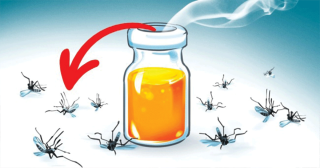What to Do When You See a Snake and How to Tell If It’s Venomous
What to Do When You See a Snake and How to Tell If It’s Venomous
Encountering a snake in the wild or even in your backyard can be a startling experience. While most snakes are harmless, it’s important to know what to do when you see one and how to determine if the snake is venomous. Here’s a guide to help you stay safe and calm during a snake encounter.
What to Do When You See a Snake
1. Stay Calm and Don’t Panic
Snakes, like most wildlife, generally prefer to avoid humans. If you encounter a snake, stay calm. Panicking or making sudden movements can startle the snake, increasing the likelihood of a defensive response.
2. Keep Your Distance
Maintain a safe distance (at least 6 to 10 feet). Snakes can strike if they feel threatened, but their strike range is usually within half of their body length. The best way to avoid danger is to give the snake plenty of space to move away.
3. Don’t Try to Touch or Handle the Snake
It might be tempting to get a closer look or even try to handle the snake, but this is dangerous, especially if you’re unsure whether it’s venomous. Never attempt to touch, grab, or pick up a snake, even if it seems docile.
4. Let the Snake Leave
In most cases, the snake will retreat on its own if it feels threatened or if you remain still. Stand back and give it time to leave the area.
5. Move Away Slowly
If the snake doesn’t move, or if you feel unsafe, back away slowly and carefully. Avoid quick movements that might startle the snake, and always keep your eyes on it as you retreat.
6. Alert Others
If you’re in a public area or near other people, calmly let others know about the snake’s presence. This ensures that everyone remains aware and safe.
How to Tell If a Snake Is Venomous
While identifying venomous snakes can be challenging, there are a few physical characteristics and behaviors that can help you make an educated guess. However, remember that not all venomous snakes fit the mold, and non-venomous snakes can mimic venomous ones, so it’s best to err on the side of caution.
1. Head Shape
•Venomous Snakes: Most venomous snakes, such as pit vipers (rattlesnakes, copperheads, and cottonmouths), have broad, triangular heads. This is due to the venom glands located on the sides of their heads.
•Non-Venomous Snakes: Non-venomous snakes usually have more rounded or oval-shaped heads, but some can flatten their heads to appear triangular when they feel threatened.
2. Eyes
•Venomous Snakes: Venomous snakes, especially pit vipers, tend to have elliptical, slit-like pupils (similar to a cat’s eyes).
•Non-Venomous Snakes: Most non-venomous snakes have round pupils. However, some venomous snakes, like the coral snake, also have round pupils, so this isn’t always a reliable identifier.
3. Color Patterns
•Venomous Snakes: Some venomous snakes have distinct, recognizable patterns. For example, coral snakes are known for their red, yellow, and black bands, with the rule of thumb being, “Red touches yellow, kill a fellow; red touches black, friend of Jack.”
•Non-Venomous Snakes: Many non-venomous snakes can have similar patterns to venomous ones. For instance, the non-venomous milk snake has similar banding to the coral snake, but its red bands touch black, not yellow.
4. Fangs
•Venomous Snakes: Venomous snakes have long, hollow fangs used to inject venom. However, this feature is usually only visible when the snake opens its mouth to strike.
•Non-Venomous Snakes: Non-venomous snakes lack fangs and have smaller, serrated teeth for gripping prey.
5. Behavior
•Venomous Snakes: Venomous snakes tend to be more defensive and will display warning behaviors if they feel threatened. Rattlesnakes, for example, will shake their rattles, while cottonmouths (water moccasins) may gape their mouths wide to show off their fangs.
•Non-Venomous Snakes: Non-venomous snakes are more likely to flee or stay still to avoid detection.
6. Geographic Location
The type of snake you encounter often depends on where you live. For example, in North America:
•Rattlesnakes, Copperheads, Cottonmouths, and Coral Snakes are the primary venomous species.
•Learn about the snakes native to your area to better understand what you may encounter.
Common Venomous Snakes and How to Identify Them
1. Rattlesnakes
•Identification: Rattles on the end of the tail, triangular head, and heat-sensing pits between the eyes and nostrils.
•Venom: Hemotoxic, which damages tissue and affects blood clotting.
•Location: Found throughout North and South America.
2. Copperheads
•Identification: Copper-colored head with hourglass-shaped bands along the body.
•Venom: Hemotoxic, but bites are usually less severe than other venomous snakes.
•Location: Primarily in the eastern and central United States.
3. Cottonmouths (Water Moccasins)
•Identification: Dark, thick body with a pale mouth. Often found near water.
•Venom: Hemotoxic.
•Location: Southeastern United States, commonly in swamps and marshes.
4. Coral Snakes
•Identification: Red, yellow, and black bands. The saying “Red touches yellow, kill a fellow” applies to venomous coral snakes.
•Venom: Neurotoxic, which affects the nervous system.
•Location: Southern United States, Central America, and parts of South America.
What to Do If Bitten by a Snake
1. Stay Calm
•Panic can increase your heart rate, which will spread the venom faster.
2. Move Away from the Snake
•Get to a safe distance and avoid further confrontation.
3. Seek Medical Help Immediately
•Even if you’re unsure whether the snake was venomous, it’s crucial to get medical attention right away. Anti-venom is most effective when administered as soon as possible.
4. Keep the Bite Area Still and Below Heart Level
•This can help slow the spread of venom. Avoid using a tourniquet, cutting the wound, or attempting to suck out the venom, as these methods are outdated and can do more harm than good.
5. Monitor Symptoms
•Common symptoms of a venomous bite include swelling, intense pain, difficulty breathing, and nausea.
Final Thoughts
While encountering a snake may be alarming, most snakes are harmless and prefer to avoid human interaction. By staying calm, giving the snake space, and knowing how to identify common venomous species, you can safely handle these encounters. And remember, snakes play an important role in ecosystems by controlling pests, so they are more helpful than harmful!










